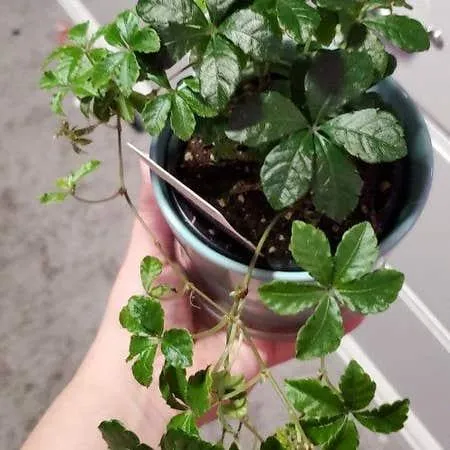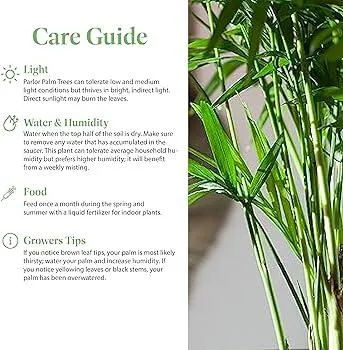Your Complete Guide to English Ivy Houseplants
Are you thinking about adding an English ivy plant to your home but not sure where to start? You’ve come to the right place. In this comprehensive guide, I’ll answer all your questions about English ivy care, uses, varieties, and more. By the end, you’ll feel confident choosing and caring for this popular crawling vine indoors.
What Is English Ivy?
English ivy (Hedera helix) is a woody, evergreen vine that is commonly grown as both an indoor and outdoor climbing plant. It is native to Europe, western Asia, and northwest Africa. Its dark green, glossy leaves are rounded with 3-5 lobes and stay small in size, making it perfect for trailing or climbing in small spaces. Ivy climbs using tiny aerial roots that cling to wood, brick, rocks and more.
Its tolerant nature and dense foliage make English ivy an ideal option for covering walls, foundations, trees and other structures both inside and out. It is one of the hardiest and most adaptable houseplants you can find. It’s no wonder English ivy has been a favorite for centuries!
English Ivy Varieties
While plain green english ivy is most common, there are several named varieties available with different leaf patterns or habits:
- ‘Argenteo-Variegata’ – Variegated leaves streaked in yellow and green
- ‘Aureovariegata’ – Variegated golden yellow and green
- ‘Baltica’ – Smaller leaves, compact growth habit
- ‘Crotonii’ – Cream and green variegated leaves
In addition, there are some dwarf ivy cultivars like ‘Needlepoint’ and ‘Ritzy’ bred for container growing or rock gardens. The variegated types tend to need a bit more sun than plain green ivy to retain their coloring.
Caring for English Ivy Indoors
As an extremely low-maintenance indoor plant, english ivy is tough to kill. Here are some tips from my experience to keep your ivy looking its best:
Light
English ivy thrives in medium to low light. East or north-facing windows provide the perfect conditions. It can tolerate lower light levels, but may grow leggy without enough sun.
Water
Allow soil to dry out between waterings, but don’t let it become completely dry. Ivy leaves may droop when thirsty but perk back up after drinking. Trailing varieties usually need watering once every 7-10 days.

Humidity
Ivy appreciates humidity levels around 50%. Run a humidifier, group with other houseplants, or mist leaves occasionally. Brown tips may appear if air is too dry.
Temperature
Keep ivy between 60-75°F for healthy growth. It can withstand drops into the 50s.”
Fertilizer
Feed monthly in spring and summer with a balanced houseplant food diluted to 1/2 or 1/4 strength. Ivy grows slowly, so underfertilizing is better than overdoing it.
Pruning & Training
Prune off any damaged or leggy stems to encourage bushier growth. Train vines up poles or trellises for an eye-catching display. Move pots around for optimal lighting as needed.
Repotting
Repot english ivy every 2-3 years in early spring using a well-draining soil mix. Up-pot only when roots start emerging from the drainage holes.
Pests & Diseases
Ivy is generally very hardy but watch out for spider mites on dry, dusty leaves. Vine weevils sometimes chew notches in foliage too.”
Proper care like I’ve outlined will ensure your ivy remains healthy indoors for years to come. Its ability to thrive in low light makes it perfect for shady spots where other plants struggle.
Using English Ivy Around the Home
Besides container growing, english ivy has many landscaping and interior design applications:

Walls & Foundations
Ivy covers and insulates exterior surfaces, preventing moisture damage. Use weeping varieties that trail rather than climb.
Fences & Arbors
Ivy transforms plain fences and structures into lush green backdrops. It hides unattractive areas quickly.
Topiaries
With careful pruning, ivy can be sculpted into balls, spirals or other shapes for a unique decorative touch.
Hanging Baskets
Tumbling ivy varieties like ‘Ritzy’ look amazing cascading over the sides of hanging pots on porches.
Shelves & Tables
Let ivy vines drape elegantly over indoor surfaces for a lush, natural style.
Picture Frames
Train small ivy cuttings or clippings to grow into living picture frames – how creative is that?
Wreaths & Arrangements
Use ivy garlands and accents to spruce up seasonal decor like mantles, doors and more.
So in summary, english ivy lends itself to a wide array of stylish uses both inside and out. Its hardy nature means little effort too. No wonder it remains such a beloved houseplant and landscaping staple. Hopefully this guide has answered your questions about caring for ivy and maximizing its decorative potential.

Let me know if you have any other questions! I’d be happy to share more tips and even swap some ivy cuttings if you’d like to get started growing some of your own impressive vines.
Key Facts About English Ivy Houseplants
| Light Conditions | Watering | Temperature | Pruning |
|---|---|---|---|
| Partial to full shade. Avoid direct sun. | Keep soil moist but not soggy. Water when top inch is dry. | Above 60°F. Avoid drafty spots or near heat sources. | Pinch back tips to encourage foliage growth. |
| Thrives in low to medium light. | Allow soil to dry between waterings. | Tolerates temperatures as low as 40°F if indoor. | Cut back vines yearly to maintain plant size. |
| Needs at least 4 hours of indirect light daily. | Water less in winter when growth is slower. | Prefers average indoor temperatures of 60-75°F. | Remove any dead or diseased growth. |
| Will tolerate very low light for short periods. | Avoid overwatering which causes root rot. | Vines can freeze in temps below 30°F. | Trim vines to shape as desired. |
FAQ
-
Can english ivy kill trees?
English ivy basically won’t directly destroy most trees. However, over time it can place excess weight on branches and cause them to break during windstorms or heavy rains. Also, the ivy blocks sunlight from reaching the tree’s leaves, which kind of weakens it. So while ivy alone may not take down a healthy mature tree, it can contribute to health issues.
-
How do I remove english ivy from trees?
Removing ivy clinging to trees is no simple task. You’ll need strong clippers or pruners to cut the vines where they attach to the trunk and major branches. It’s best to do this in late spring or summer when the plant is actively growing. Be thorough, since missing even one section can allow the ivy to regrow. Check back frequently to cut any missed vines. Persistence is key, as ivy puts down deep roots – it may take several seasons to fully remove it.
-
Can english ivy spread and become invasive?
English ivy was once considered a popular ground cover plant that stayed confined to gardens. However, it has sort of turned out to have a dark side. If left unchecked, this plant will spread rapidly by underground stems to invade woodlands and crowding out native plants. It grows vigorously over anything in its path, from trees to buildings. So while ivy looks nice in a contained area, it can potentially wreak havoc if it escapes into the environment. Best to use with caution!
-
How do I care for an english ivy houseplant?
Water ivy plants whenever the top inch or so of soil becomes dry. Make sure the drainage holes in the pot allow excess water to easily run through. As for lighting, ivy prefers bright, indirect sun but can tolerate low-light conditions. Fertilize in spring and summer. Ivy plants will trailing vines if given something – like a moss pole or trellis – to climb. Snip off any browning or dying leaves. Repot into a slightly larger pot whenever roots start growing from the drainage holes. With the rightconditions, english ivy can thrive indoors for years!
-
Why is english ivy considered bad for the environment?
While ivy looks nice blanketing trees or walls, it actually poses problems in natural areas. English ivy forms dense mats that crowd out native ground covers and wildflowers. Birds then stop nesting where ivy grows thickly. Moreover, without leaves to photosynthesize, trees smothered by ivy will die over time. On the other hand, ivy vines prevent habitat for animals in forest undergrowth that shelter under fallen leaves. Therefore, many regions now ban its use in gardens near natural areas to protect biodiversity.
-
What other houseplants are good climbers like english ivy?
Some alternatives to english ivy that will trail or climb include pothos, philodendron, Swedish ivy, and wax plant. Pothos is extremely low maintenance – it tolerates lack of sunlight quite well. Philodendrons come in lots of species with interesting leaf shapes and colors. Swedish ivy resembles english ivy but isn’t invasive outdoors. Wax plant has shiny succulent-like leaves and trails elegantly. For smaller spaces, consider tabletop climbers such as creeping fig, spider plant, or tradescantia. The climbing habit of plants like these makes them perfect to liven up walls and moss poles indoors.
-
Are there any downsides to keeping english ivy as a houseplant?
While english ivy is a popular indoor plant thanks to its attractive foliage and vines, it isn’t perfect. The leaves can collect dust easily so regular wipe downs are needed. Ivy also grows fast, so it may need pruning or repotting more frequently than other trailed plants. Some people report ivy causing minor rashes or irritation after much handling. There’s also a perception that ivy planted near windows will try escaping outside given half a chance! Overall though, with typical houseplant care ivy can do well indoors for quite some time.

